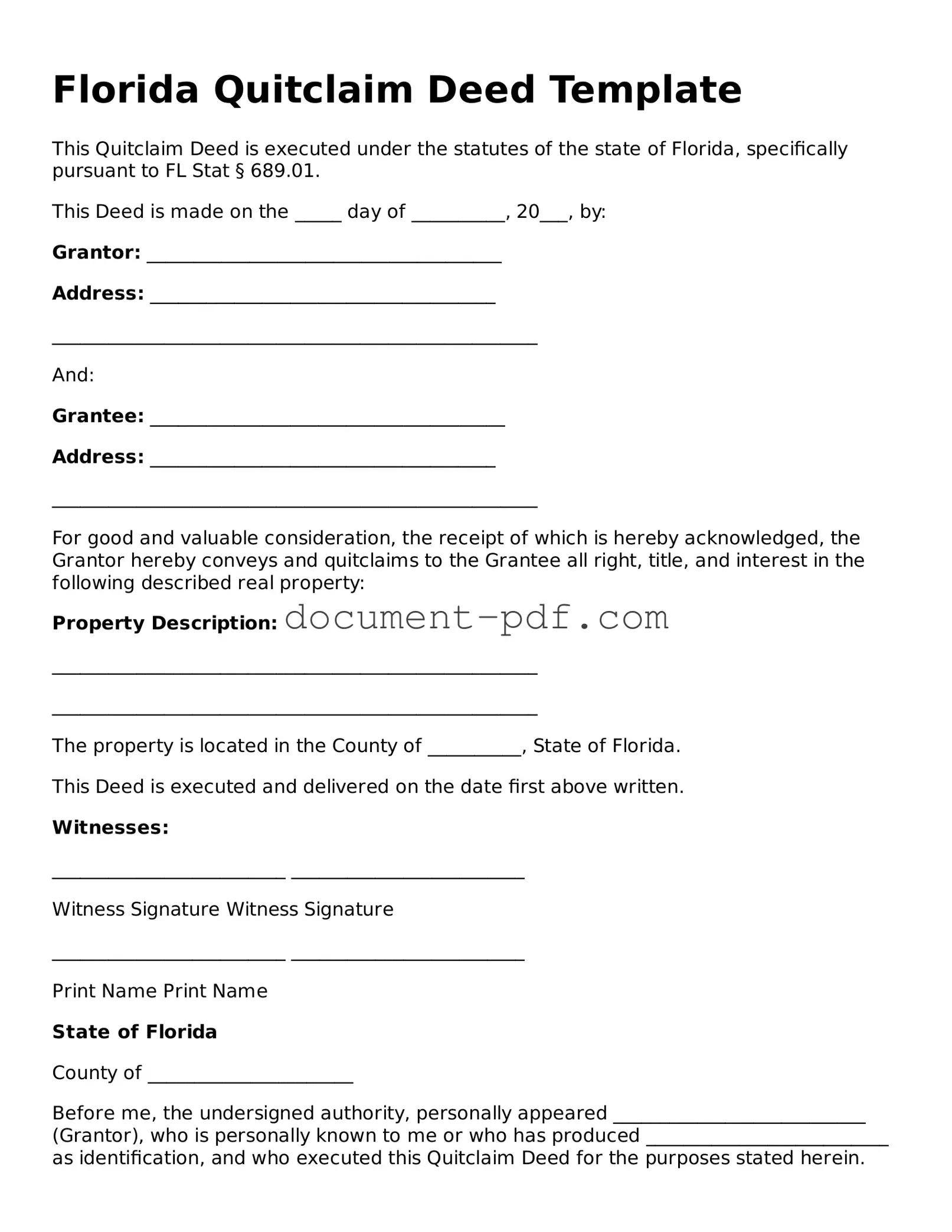Florida Quitclaim Deed Template
This Quitclaim Deed is executed under the statutes of the state of Florida, specifically pursuant to FL Stat § 689.01.
This Deed is made on the _____ day of __________, 20___, by:
Grantor: ______________________________________
Address: _____________________________________
____________________________________________________
And:
Grantee: ______________________________________
Address: _____________________________________
____________________________________________________
For good and valuable consideration, the receipt of which is hereby acknowledged, the Grantor hereby conveys and quitclaims to the Grantee all right, title, and interest in the following described real property:
Property Description:
____________________________________________________
____________________________________________________
The property is located in the County of __________, State of Florida.
This Deed is executed and delivered on the date first above written.
Witnesses:
_________________________ _________________________
Witness Signature Witness Signature
_________________________ _________________________
Print Name Print Name
State of Florida
County of ______________________
Before me, the undersigned authority, personally appeared ___________________________ (Grantor), who is personally known to me or who has produced __________________________ as identification, and who executed this Quitclaim Deed for the purposes stated herein.
Given under my hand and official seal, this _____ day of __________, 20___.
______________________________
Notary Public
My Commission Expires: _____________
